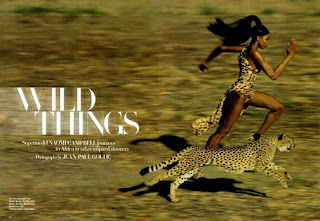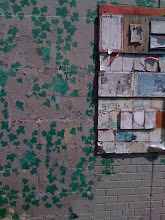
As the weather turns dark and damp and leaving my apartment becomes increasingly less appealing, my new guilty pleasure is curling up next to my sputtering radiator with a DVD and a steaming mug of chai tea. I may look more sleepy than chic bundled up in baggy sweats and swaddled in a dingy blanket, but my stylish Netflix queue more than makes up for my slouchy ensemble. Here are my picks for the best feel-good fashion flicks, which let me cheaply indulge my couture curiosity without leaving the comfort of my futon.
Valentino: The Last Emperor
Matt Tyrnauer’s documentary follows the effervescent Italian iconoclast Valentino Garavani as the designer prepares for his final fashion show and huge fete in honor of his 45 years of cutting-edge couture. The impeccably-coiffed, super-tan couturier helmed his own line for more than four decades and dressed some of the world’s most fashionable women, including Jackie O and Elizabeth Taylor. The film ranges from farcical to fanciful, vacillating between portrayals of Valentino as a cranky, crotchety monarch toting five misbehaving pug pups, and as a shy, self-effacing artist. Though the designer seems dictatorial when he chastises his assistants and seamstresses, his self-conscious vulnerability is painfully evident, especially during the moment when he obsessively agonizes over a strand of sequins adorning a show-stopping white evening gown.
The documentary sheds light on the business aspect of the fashion industry by focusing on the designer’s relationship with one-time lover and long-time business partner Giancarlo Giammetti, who was responsible for negotiating the licensing agreements that turned Valentino into a household name.
While viewers won’t really get a sense of the scope and scale of Valentino’s influence on the fashion world, they will be privy to his luxe life, invited into his lavish mansions, and yacht, where he lounges with pals like Gwyenth Paltrow and Elton John. Viewers also get to see the preparations for one of the designer’s final couture shows, a presentation of slinky, sensual evening gowns set amidst painted sand dunes and a romantic setting sun.
My favorite part was the opulent, three-day extravaganza celebrating the decadent emperor’s 45 year rule over the fashion industry. The celebration featured a stunning retrospective at the Ara Pacis museum, a star-studded ball at the Villa Borghese, and a circus-like spectacular at the Temple of Venus, which featured high-wire dancers and a grand fireworks show. Unbeknownst to the guests, the party was one of the last times the emperor would sit on his throne: He retired in 2008.
Seamless
This 2005 documentary by fashion photographer Douglas Keeve follows three finalists in the Vogue-sponsored CFDA Fashion Fund Competition, a contest to mentor and support the next generation of designers.
Doo Ri Chung, Alexandre Plokhov, and the team of Lazaro Hernandez and Jack McCollough, the boys behind the Proenza Schouler line, are the smart-but-struggling designers looking for their big break. The film emphasizes the designers’ talent, financial troubles, and passion as they show samples of their work and make presentations for an intimidating panel of fashion magnates. This documentary shows that the fashion industry is not all glitz and glamour—even the best and brightest of the designers are struggling to make ends meet, setting up makeshift workshops in their parents’ storage spaces. With these glimpses into the real lives of designers, this touching film emphasizes the importance of nurturing talent both financially and creatively.
The September Issue
R.J. Culter’s documentary permits devoted fashionistas to enter the hallowed halls of the Conde Nast building and watch the creative process behind the September 2007 issue of Vogue. At more than 600 pages, this monster issue was the heftiest fashion magazine to ever hit newsstands.
Vogue’s icy editor-in-chief, Anna Wintour, does not come off as megalomaniacal and sneaky as Meryl Streep portrayed her in the thinly-veiled tell-all, The Devil Wears Prada (which was based on the novel penned by one of Wintour’s former assistants). Instead, Wintour, whose tiny frame is comically swallowed by her huge furs and baubles, seems lonely and insecure, as if always afraid that someone will dethrone her and destroy the empire that she has spent tireless years building. Though she’s clearly a competent, decisive, and snarky boss, she sometimes seems to grimace under her big, dark sunglasses, as if running the world’s most famous fashion magazine is a heavier burden than she can bear.
Watch for scene-stealers such as the gentle, Louis-Vuitton-clad giant Andre Leon Talley, the magazine’s flamboyant editor-at-large, and thick-skinned Grace Coddington: the magazine's long-time creative director, in addition to a brilliant, whimsical stylist, and what seems to be the only staff member to stand up to Wintour’s dictums. Talley is hilarious in his monogrammed tennis attire, and Coddington’s enduring passion for her beautiful work is extremely touching.
These three films emphasize the human aspect of an industry known for its ruthlessness. Next time you’re in the mood for a fashion fix without blowing your budget or leaving the comfort of your apartment, cuddle up with a stylish documentary. All of these films offer a behind-the-scenes peek at the inner workings of the fashion world and illuminate the pathos behind the pictures.
(Photo credit: Amulya Mandava)












